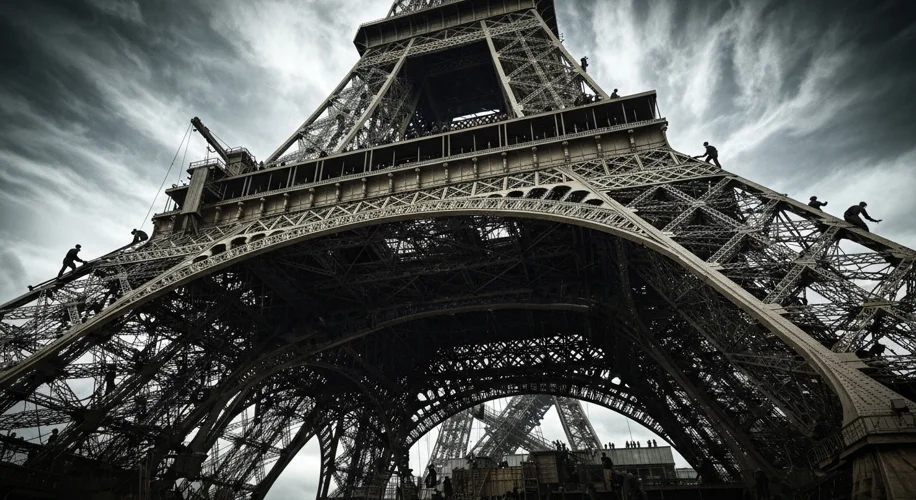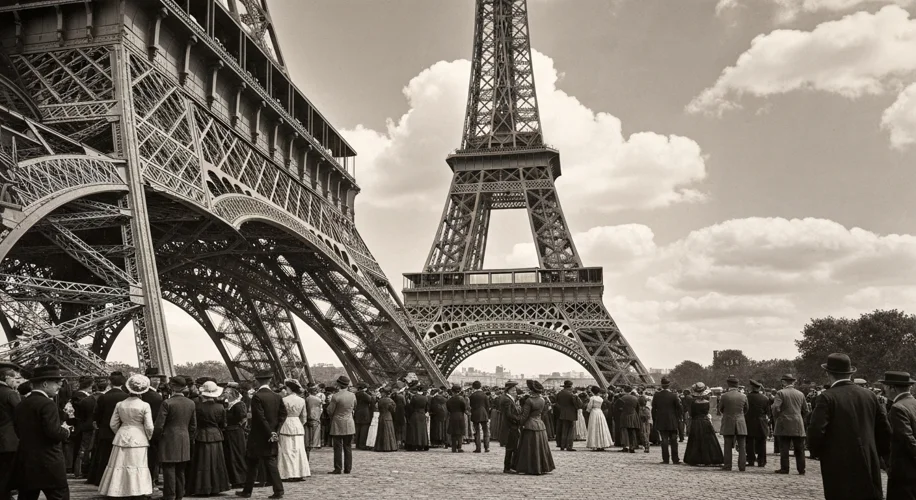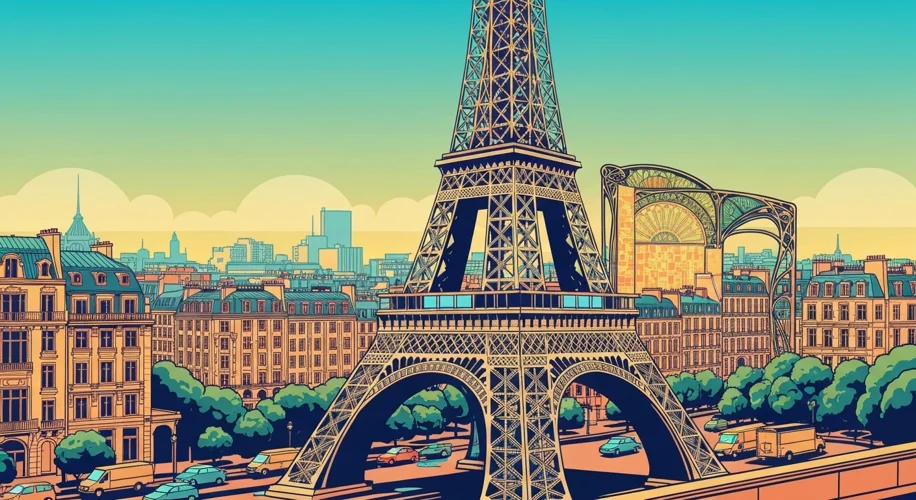In the heart of Paris, amidst the elegant Haussmannian boulevards, a towering lattice of iron rose against the sky, destined to become the enduring symbol of France. The year was 1889, and the Exposition Universelle – the World’s Fair – was poised to showcase the pinnacle of human innovation. At its center stood a controversial marvel, the brainchild of Gustave Eiffel: the Eiffel Tower.
The genesis of this iconic structure lay in a competition to design a centerpiece for the 1889 World’s Fair, an event commemorating the 100th anniversary of the French Revolution. The brief called for a monument that would not only celebrate French industrial prowess but also stand as a testament to the nation’s engineering genius. Over one hundred proposals were submitted, but it was the audacious design by Gustave Eiffel’s company that captured the imagination, albeit with a significant dose of skepticism.
Gustave Eiffel, already a renowned engineer for his work on bridges and the internal framework for the Statue of Liberty, assembled a team of brilliant minds, including Maurice Koechlin and Émile Nouguier, to conceptualize the tower. Their vision was revolutionary: a soaring iron structure, 300 meters (984 feet) in height, constructed from puddle iron and held together by an intricate network of rivets. The sheer audacity of its design was breathtaking. It was to be the tallest man-made structure in the world, dwarfing any edifice that had come before it.

However, the path from concept to completion was far from smooth. As the foundations were laid and the iron skeleton began to climb, a chorus of dissent rose from Paris’s artistic and literary elite. A “Committee of Three Hundred” – named after the tower’s intended height in meters – led by prominent figures like Guy de Maupassant and Charles Gounod, penned a vitriolic protest. They decried the tower as a “gigantic black factory chimney,” a “useless and monstrous” blight on the Parisian skyline, an affront to the city’s artistic heritage. They feared its industrial aesthetic would clash with the classical beauty of Paris, permanently scarring its aesthetic soul.
Construction commenced in 1887, a Herculean effort that defied the skeptics. Over 300 workers toiled in often perilous conditions, assembling 18,000 individual iron parts with 2.5 million rivets. The precision engineering was astounding. Prefabricated pieces were lowered into place with remarkable accuracy, demonstrating the very innovation the fair aimed to celebrate. Safety was paramount, and remarkably, only one worker lost his life during the construction – a testament to Eiffel’s meticulous planning and safety protocols, especially considering the era.
The tower’s inauguration on March 31, 1889, marked a pivotal moment. As the French tricolor was unfurled from its summit, the cheers echoed across Paris. The Eiffel Tower had not only been built but had become a tangible symbol of human ingenuity and perseverance. During the Exposition Universelle, it served as the grand entrance arch and an observation point, drawing millions of visitors who marveled at its height and the panoramic views it offered. It was an undeniable triumph of engineering over artistic apprehension.
The initial controversy, however, lingered. Many saw it as a temporary marvel, destined to be dismantled after the fair. Yet, the tower proved its worth beyond its aesthetic appeal. Its height made it an invaluable platform for scientific experiments, from meteorology to radio transmissions. During World War I, its strategic position played a crucial role in intercepting enemy communications, notably the famous taxi fleet of the Marne that ferried troops to the front lines.

The Eiffel Tower’s journey from a controversial engineering feat to a beloved global icon is a compelling narrative of vision, perseverance, and the transformative power of innovation. It stands today not just as a monument of iron and rivets, but as a testament to the bold spirit that dared to reach for the sky, forever changing the face of Paris and the world’s perception of what is possible.
Initially loathed by many of the city’s cultural arbiters, the tower gradually won over hearts and minds. Its practical applications in communication and science, coupled with its undeniable visual impact, cemented its place in the Parisian landscape. What was once derided as an industrial monstrosity became, over time, a symbol of elegance, romance, and French identity itself. The sheer audacity of its creation, the outcry it inspired, and its ultimate embrace by the world make the Eiffel Tower a truly captivating chapter in the history of human ambition.

